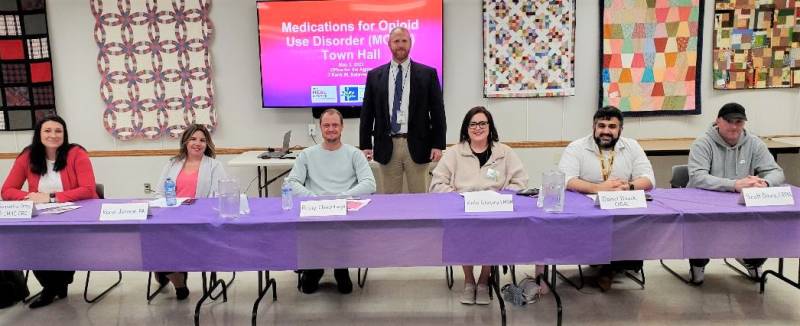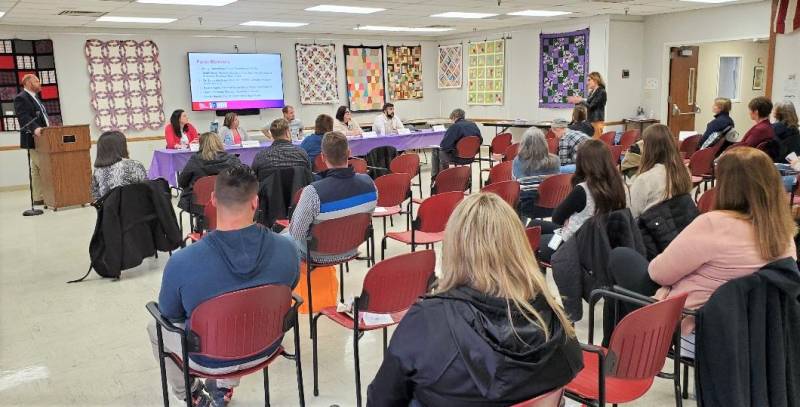GO Health encourages 'MOUD' as viable treatment for opioid use disorder
Press Release:
No matter who we are or where we come from, we all know at least one person affected by opioid use disorder (OUD). An estimated 2.1 million Americans have OUD 1.
Since 2019, there have been 57 fatal opioid overdoses in Genesee County, with additional deaths still pending official causes of death. What many don’t realize is that OUD is a medical disorder characterized by an inability to stop the use of an opioid, despite the negative consequences associated with its use.
HEALing Genesee is committed to reducing opioid overdose deaths. Many families are broken and lives are disrupted due to misuse of opioids. Research findings are clear: medications for opioid use disorder (MOUD) are the single most effective tool to promote long-term recovery.
Recovery from OUD also requires more than willpower, and medications can be part of the solution. Three FDA approved medications – methadone, buprenorphine, and naltrexone – can lower the risk of relapse and overdose.
Evidence shows that these medications reduce or eliminate withdrawal symptoms (methadone, buprenorphine), blunt or block effects of illicit opioids (methadone, naltrexone, buprenorphine), and reduce or eliminate cravings to use opioids (methadone, buprenorphine).
MOUD treatment can be combined with psychotherapy, support groups, or other treatment opportunities where available. To reduce overdose deaths and the many other destructive effects of opioid use disorder on our community, we must increase the number of people who seek MOUD treatment and who stay in treatment long enough to
recover.A HEALing Communities Study spokesperson, Johnny, has been taking MOUD for over 5 years as part of his recovery path. During an interview led by study staff, Johnny provided some ways for how he overcame treatment barriers. “At the beginning there were many people who didn’t believe in MOUD.”
He noted there were many people in his life who believed MOUD was just substituting one drug for another, but it’s not. He says, “Don’t give up. This [MOUD] works. If it doesn’t work for you the first time, try again. Be honest with yourself and your counselors and the people trying to help you. It is your treatment and your recovery. Stay in treatment, your life is worth it!”
You Can Help HEAL our Communities
How can you help? If you know someone with opioid use disorder, encourage them to seek MOUD. If you know someone who is in MOUD treatment, let them know you support their efforts and recognize the courage it takes to break the cycle of drug dependence. If someone you know has a family member in MOUD treatment, tell them how glad you are to hear it and how you hope their family member stays in that treatment as long as they need it.
Your encouragement matters because one of the reasons that some people leave MOUD treatment too soon, or never enter it at all, is lack of support from family and friends. The notion that MOUD “isn’t real recovery” has prevented too many people from using MOUD to succeed in recovery and there are challenges people in recovery face. Some challenges may include separating from previous drug-using social networks and managing anxiety and depression, withdrawal, and potential occasional relapse events.
For a person with opioid use disorder, chances of recovery become much greater when MOUD treatment efforts are supported by friends, family, and the connections within their social networks, and transportation, housing, and employment are accessible in the community.
Together, we can HEAL our communities.
To learn more about the challenges people face with opioid use disorder, and some tips to overcome them, visit www.HealTogetherStories.org to watch the powerful testimonials of people on MOUD in communities like ours. It is up to all of us to help as many people in Genesee County recover from opioid use disorder.
To learn more about the HEALing Communities Study, visit:
- HEALing Communities Study Website: www.HealTogetherNY.org/Genesee
- GOW Opioid Task Force Website: www.gowopioidtaskforce.org/
- GO Health Facebook: www.facebook.com/GOHealthNY


